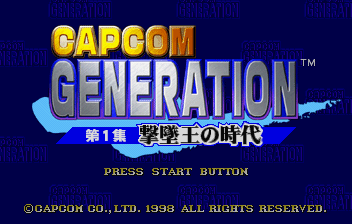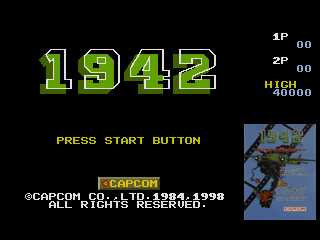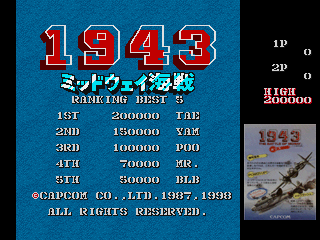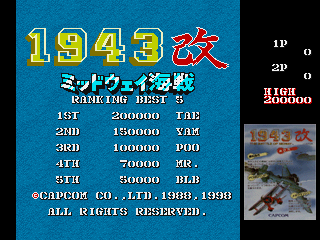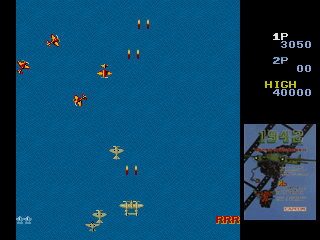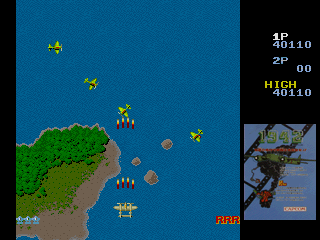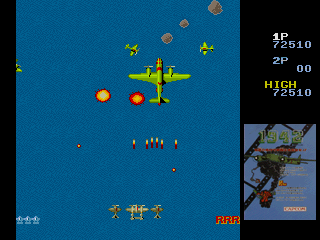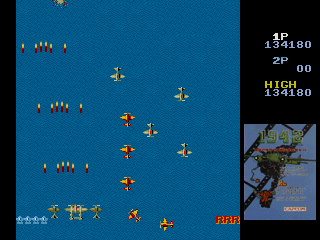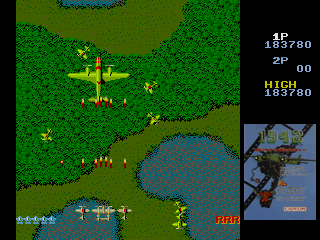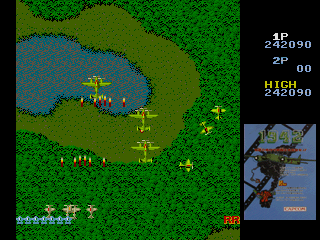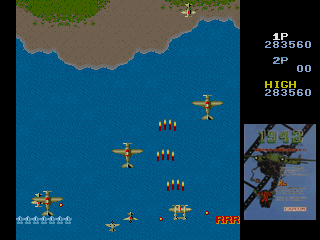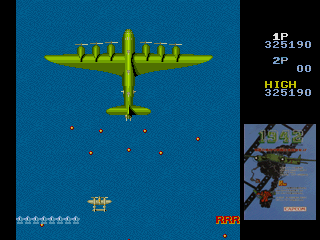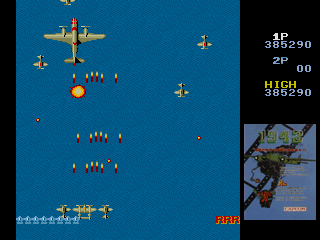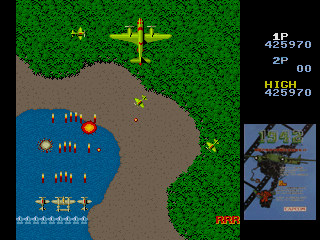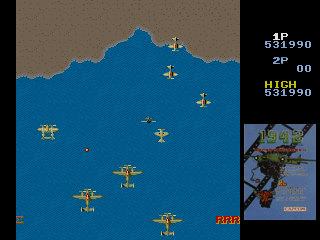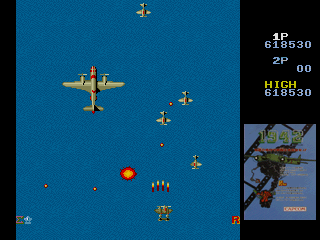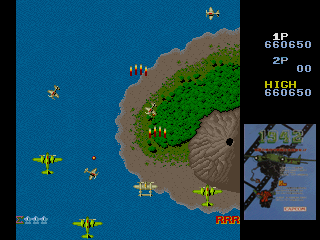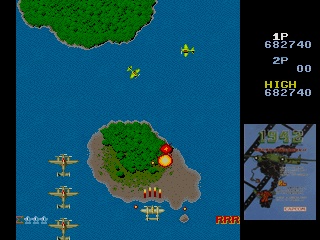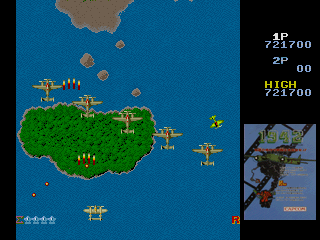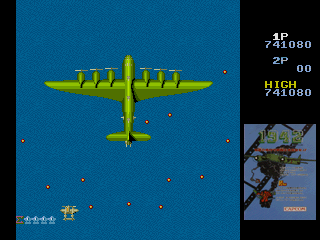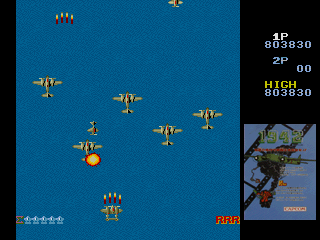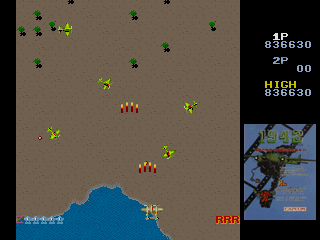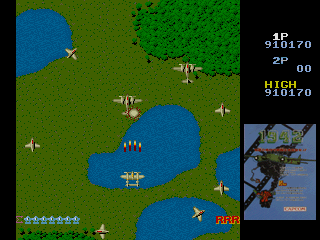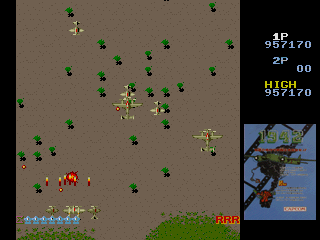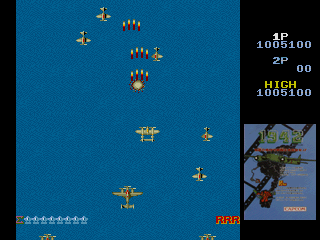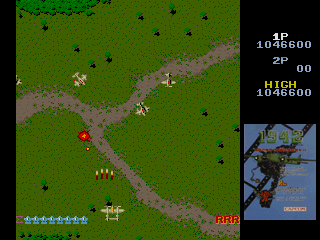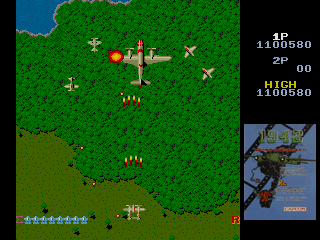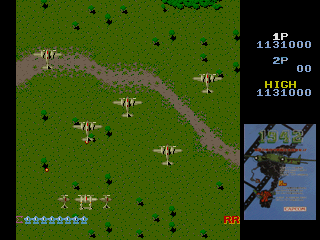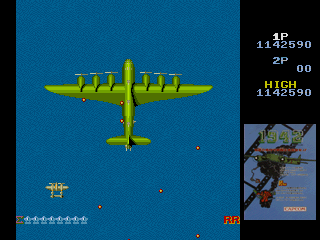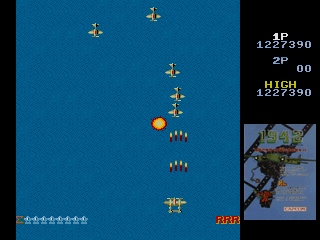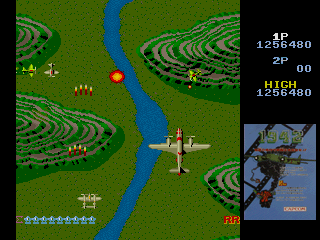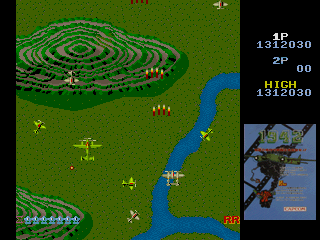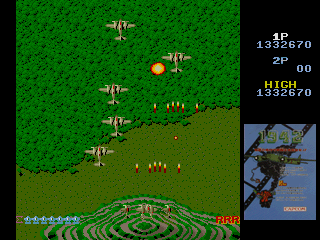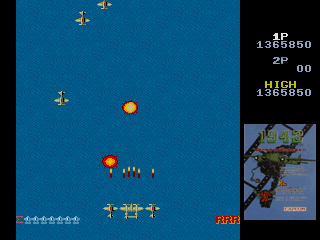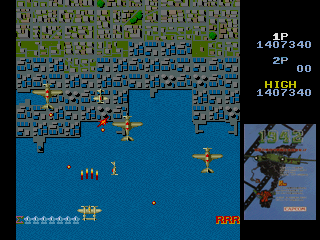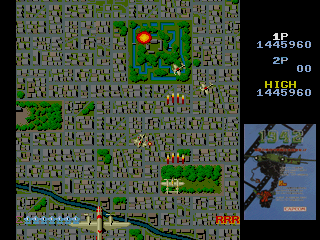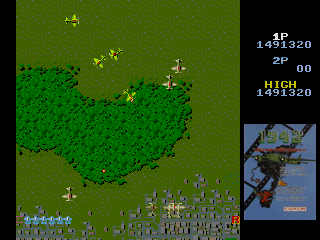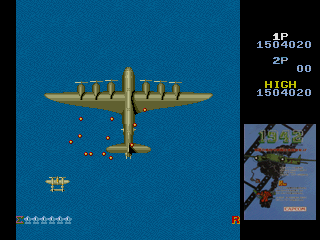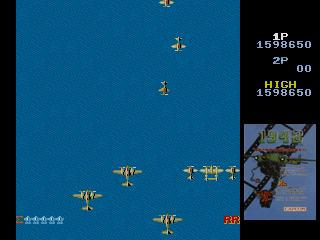Capcom Generation: Dai 1 Shuu Gekitsuiou no Jidai
From Sega Retro
| ||||||||||
| Capcom Generation: Dai 1 Shuu Gekitsuiou no Jidai | ||||||||||
|---|---|---|---|---|---|---|---|---|---|---|
| System(s): Sega Saturn | ||||||||||
| Publisher: Capcom | ||||||||||
| Developer: Capcom | ||||||||||
| Original system(s): Capcom 1942 hardware, Capcom 1943 hardware | ||||||||||
| Game total: 3 | ||||||||||
| Sound driver: SCSP (1 track) | ||||||||||
| Genre: Compilation, Shooting[1][2] | ||||||||||
| Number of players: 1-2 | ||||||||||
| ||||||||||
|
Capcom Generation: Dai 1 Shuu Gekitsuiou no Jidai (カプコンジェネレーション第1集 撃墜王の時代) is the first of five compilations for the Sega Saturn (and PlayStation) developed by Capcom.
The first volume focuses on the 194X series of vertical shoot-'em-ups set in World War II.
Contents
Games included
- 1942
- 1943
- 1943 Kai
Every game has a "Collection" with artwork (including promotional art and concept art), information, and game tips. Options and high scores can be saved to the Saturn's internal memory.
Gameplay
1942
1942 is a vertically scrolling shoot-'em-up, originally released in 1984, and the first game in the 194X series. It is set in the Pacific Theater of World War II and loosely based on the Battle of Midway. The game was designed to appeal to Western audiences, so despite being created by Japanese developers, the player commands an American P-38 Lightning, dubbed the "Super Ace," and must destroy the Japanese air fleet. The player must shoot down enemy planes and avoid enemy fire through 32 stages, which take place primarily over the Pacific Ocean and islands and end by landing on an aircraft carrier. There is a two-player mode where players take turns.
The Super Ace moves in any direction using the D-Pad. It shoots with ![]() or
or ![]() , which can be held for continuous fire, or it shoots faster with
, which can be held for continuous fire, or it shoots faster with ![]() or
or ![]() . The plane's weapon can be upgraded once to fire a wider shot, and the player can obtain two smaller escort fighters that supplement its fire with their own. The plane can perform an evasive maneuver with
. The plane's weapon can be upgraded once to fire a wider shot, and the player can obtain two smaller escort fighters that supplement its fire with their own. The plane can perform an evasive maneuver with ![]() that causes it quickly loop out of the playfield, which can be used to avoid enemy fire or to fly over enemy planes. This can only be done a maximum of three times per stage.
that causes it quickly loop out of the playfield, which can be used to avoid enemy fire or to fly over enemy planes. This can only be done a maximum of three times per stage.
The plane is downed if it takes a single hit from enemy fire or collides with another aircraft, which costs a life. The plane respawns at a checkpoint without any acquired power-ups. Extends are given at 20,000 and 80,000 points, then every 80,000 points after that. The game ends if the player runs out of lives. In addition to the high score, the game also keeps track of the ratio of enemy fighters shot down.
There are four difficulty levels, and the player can change the points thresholds for earning extra lives or toggle continues. Since the original game uses a vertical aspect ratio, there are three screen modes: Type 1 interpolates the image to fit into the height of the Saturn's video mode, Type 2 (the default) crops the playfield to fit the screen, and Type 3 preserves the vertical aspect ratio (but requires the player to rotate the monitor).
Items
Destroying a formation of red enemy planes awards a power-up.
| Doubles the number of shots fired by the plane from two to four at a time. | |
| Adds two side fighters that follow the plane and fire alongside it. The fighters can be destroyed if they are hit by enemies. Hitting an enemy with a fighter destroys both the enemy and the fighter. The fighters depart for boss fights. | |
| Suppresses enemy fire for 15 seconds. | |
| Destroys all on-screen enemies. | |
| Gives the player another use of the loop ability (which is not carried over to the next stage if unused), up to a maximum of 4*. | |
| Gives the player an extend. | |
| Awards 1,000 bonus points. | |
| Yashichi | |
| Awards 5,000 bonus points. These are dropped by green planes with erratic flight patterns. This symbol occurs frequently as a bonus item in Capcom games. |
Stages
The stages start at Midway (part of the Hawaiian archipelago) and end at Tokyo.
Midway
Marshall
Attu
Rabaul
Leyte
Saipan
Iwo Jima
Okinawa
1943
1943 Kai
History
Release
This is the first release in the Capcom Generation series. The Sega Saturn versions of these games were exclusively released in Japan, but the PlayStation versions of the first four volumes were released in a bundle titled Capcom Generations in Europe (except for the German version, which omits the fourth volume).
Magazine articles
Promotional material
Physical scans
| Sega Retro Average | ||||||||||||||||||||||||||||||||||||||||||||
|---|---|---|---|---|---|---|---|---|---|---|---|---|---|---|---|---|---|---|---|---|---|---|---|---|---|---|---|---|---|---|---|---|---|---|---|---|---|---|---|---|---|---|---|---|
|
| 58 | |
|---|---|
| Based on 8 reviews | |
Technical information
References
NEC Retro has more information related to 1942
|
NEC Retro has more information related to 1943 Kai
|
- ↑ File:CapcomGeneration1 Saturn JP Box Back.jpg
- ↑ 2.0 2.1 https://sega.jp/history/hard/segasaturn/software_l.html#tab04 (Wayback Machine: 2019-12-07 02:59)
- ↑ Sega Saturn Magazine, "1998-25 (1998-09-11,18)" (JP; 1998-08-28), page 5
- ↑ CD Consoles, "Novembre 1998" (FR; ), page 140
- ↑ Famitsu, "1998-09-04" (JP; 1998-08-21), page 1
- ↑ Joypad, "Octobre 1998" (FR; 1998-xx-xx), page 88
- ↑ Saturn Fan, "1998 No. 16" (JP; 1998-08-07), page 138
- ↑ Saturn Fan, "1998 No. 20" (JP; 1998-10-23), page 96
- ↑ Sega Saturn Magazine, "November 1998" (UK; 1998-10-xx), page 58
- ↑ Sega Saturn Magazine, "1998-24 (1998-08-21,28)" (JP; 1998-08-07), page 201
- ↑ Sega Saturn Magazine, "Readers rating final data" (JP; 2000-03), page 12
| Capcom Generation: Dai 1 Shuu Gekitsuiou no Jidai | |
|---|---|
|
Main page | Comparisons | Magazine articles | Reception | Technical information
| |
